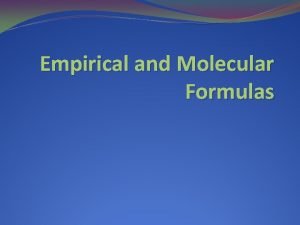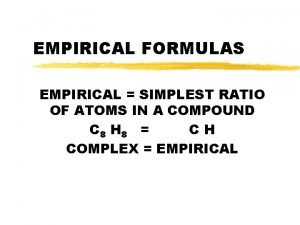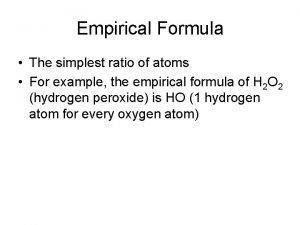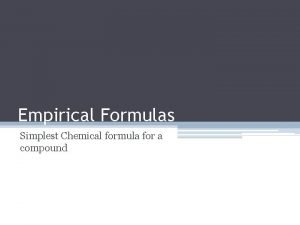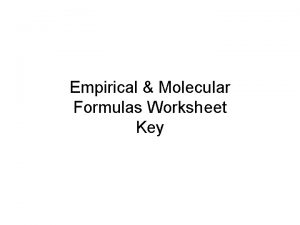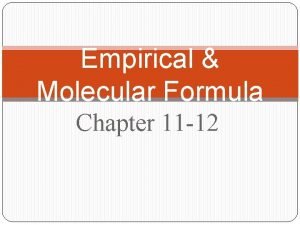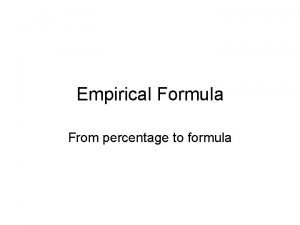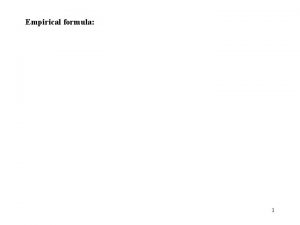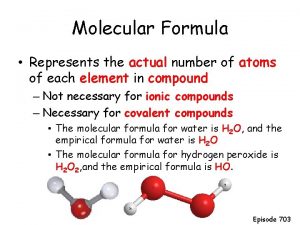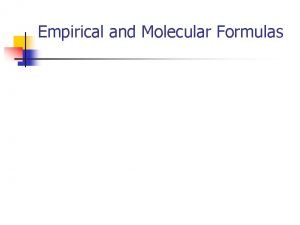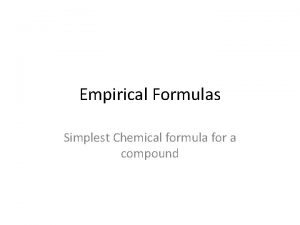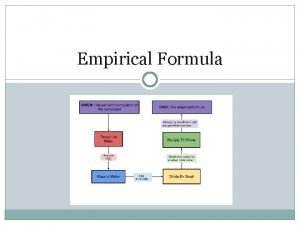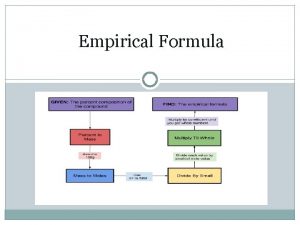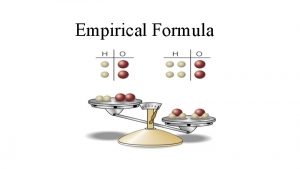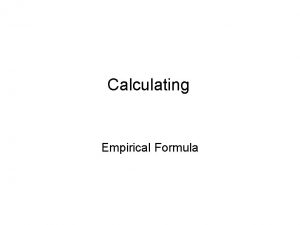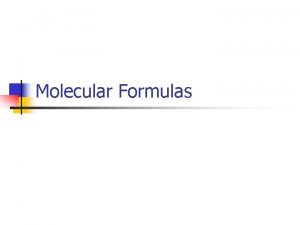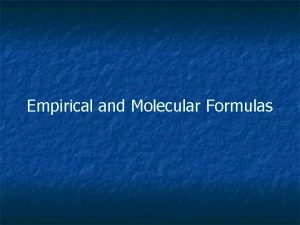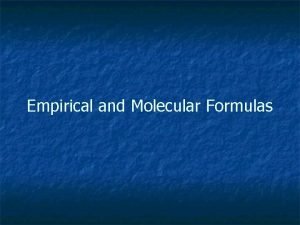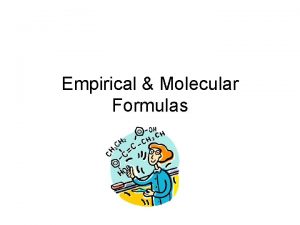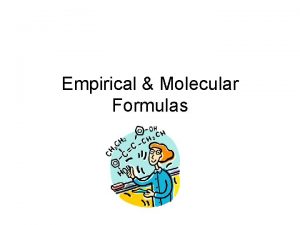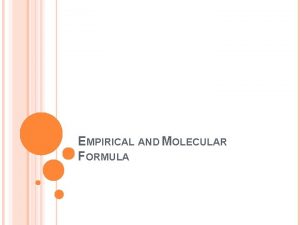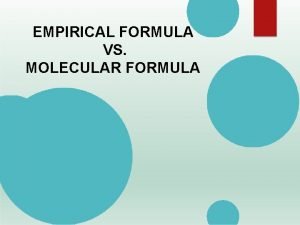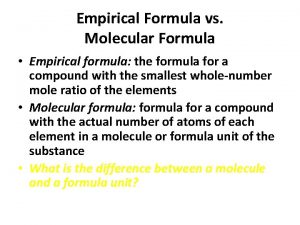Empirical Formulas Simplest Chemical formula for a compound















- Slides: 15

Empirical Formulas Simplest Chemical formula for a compound

Empirical Formulas • Molecular Formula- actual number of atoms of each element in a compound • Empirical Formula- formula with the lowest whole number ratio ▫ may or may not be the same as the actual molecular formula. • If the two formulas are different, the molecular formula will always be a simple multiple of the empirical formula.

Molecular Formula Based on the actual number of atoms of each type in the compound Empirical formula C 3 H 8 Molecular Formula C 6 H 16 C 12 H 48

Practice Problems • Write the empirical formula for each of the following molecular formulas. • C 6 H 12 O 6 • H 2 O 2 • C 4 H 10 • H 2 O • N 2 O 4 • C 3 H 6 O 2

Writing Empirical Formulas 1. Drop the % sign and add g (for grams) to the element 75% Hg and 25% Cl 75 g Hg and 25 g Cl

Writing Empirical Formulas 2. Change all gram amounts to moles 75 g Hg ( 1 mole ) = 0. 375 mol Hg 200 g Hg 25 g Cl ( 1 mole) = 0. 714 mol Cl 35 g Cl

Writing Empirical Formulas 3. Divide all mole amounts by the smallest mole amount 75 g Hg ( 1 mole ) = 0. 375 mol Hg = 1 200 g Hg 0. 375 25 g Cl ( 1 mole) = 0. 714 mol Cl = 1. 9 2 35 g Cl 0. 375

Writing Empirical Formulas 4. The answer from step 3 now will be the subscripts for each element 75 g Hg ( 1 mole ) = 0. 375 mol Hg = 1 200 g Hg 0. 375 25 g Cl ( 1 mole) = 0. 714 mol Cl = 1. 9 2 35 g Cl 0. 375 Hg. Cl 2

Mole Rounding Rules If the mole amount ends in this decimal… • . 25 x 4 • . 33 x 3 • . 5 x 2 • If you multiply you must multiply to all numbers

Example with Rounding 36. 84% N and 63. 16% O 36. 84 g N (1 mole) = 63. 16 g O (1 mole) =

Example with Rounding 36. 84% N and 63. 16% O 36. 84 g N (1 mole) = 2. 63 mol N 14 g N 63. 16 g O (1 mole) = 3. 95 mol O 16 g O

Example with Rounding 36. 84% N and 63. 16% O 36. 84 g N (1 mole) = 2. 63 mol N = 1 14 g N 2. 63 63. 16 g O (1 mole) = 3. 95 mol O = 1. 5 16 g O 2. 63

Example with Rounding 36. 84% N and 63. 16% O 36. 84 g N (1 mole) = 2. 63 mol N = 1 x 2 =2 14 g N 2. 63 63. 16 g O (1 mole) = 3. 95 mol O = 1. 5 x 2= 3 16 g O 2. 63 N 2 O 3

Calculating Molecular Formula mass = # Empirical Formula mass The number now needs to be multiplied to the subscripts in the empirical formula

Molecular Formula example A substance has a molecule formula mass of 42 amu and the empirical formula for a compound is CH 2. What is the molecule formula for this compound Molecular Formula Mass = 42 amu = 3 Empirical Formula Mass 14 amu CH 2 C 3 H 6
 Find the empirical/simplest formula co
Find the empirical/simplest formula co Find the empirical/simplest formula fe
Find the empirical/simplest formula fe Simplest ratio formula
Simplest ratio formula Simplest ratio empirical formula
Simplest ratio empirical formula Empirical formula rounding rules
Empirical formula rounding rules Chapter 7 chemical formulas and chemical compounds test
Chapter 7 chemical formulas and chemical compounds test Chemical formula of love
Chemical formula of love Empirical and molecular formula worksheet
Empirical and molecular formula worksheet Which formula is an empirical formula?
Which formula is an empirical formula? Empirical formulas
Empirical formulas Empirical formula
Empirical formula Empirical formula of haemoglobin
Empirical formula of haemoglobin How to find empirical formula with percentages
How to find empirical formula with percentages Molecular formula
Molecular formula Molecular formula
Molecular formula Molecular formula and empirical formula
Molecular formula and empirical formula
